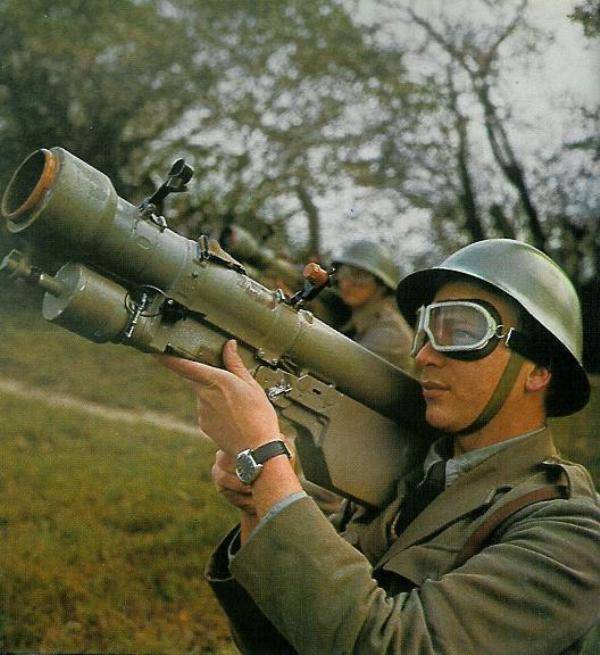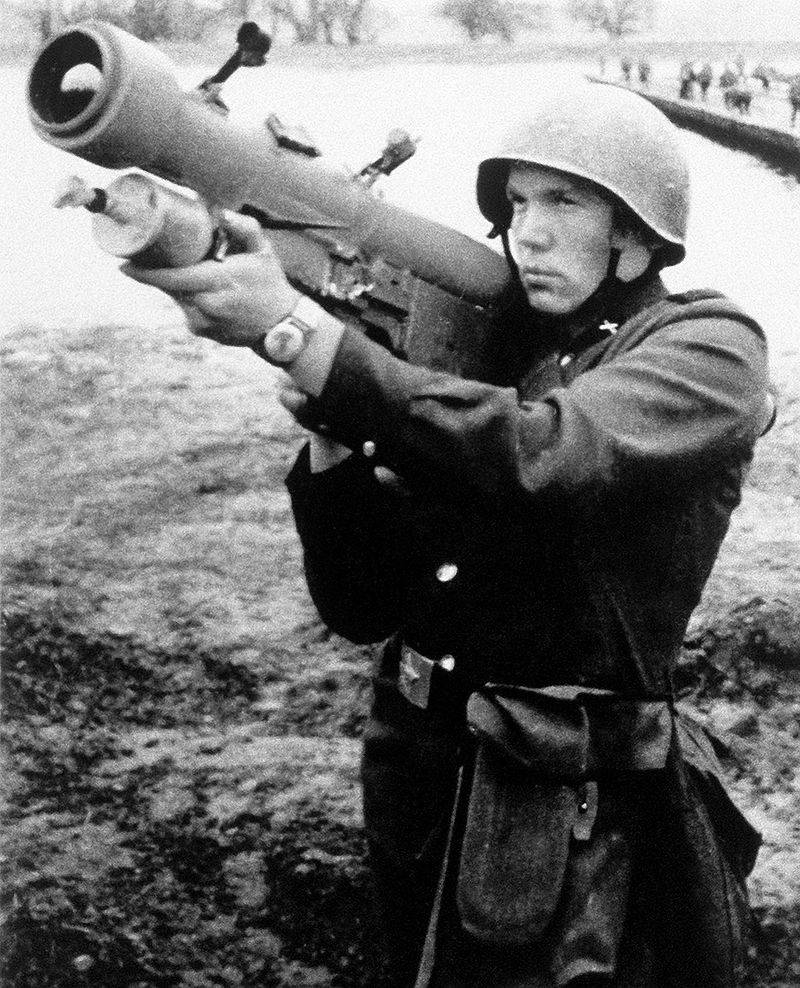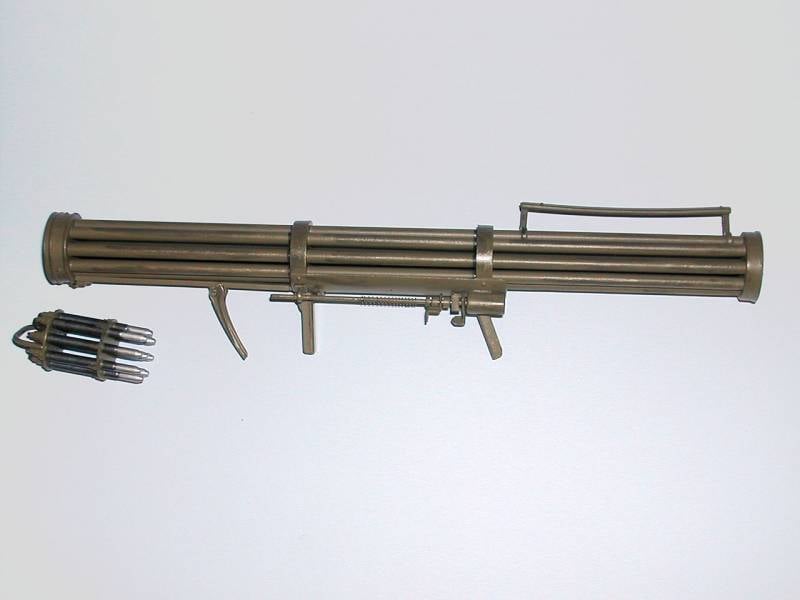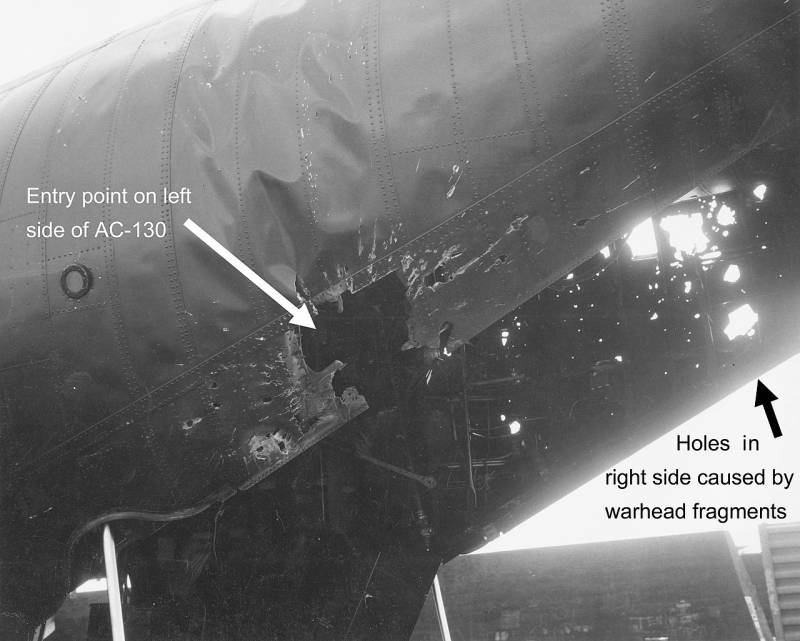"Manual" air defense systems. Part of 1. MANPADS "Strela-2"
The idea to equip an infantryman with an effective means of combating air targets appeared in the years of World War II, when aviation began to play a big role on the battlefield. At the very end of the war, German designers tried to use the concept of an effective, simple and relatively inexpensive Panzerfaust anti-tank grenade launcher already created in Germany to combat enemy aircraft. The result of their research was the appearance of a portable multi-barrel installation of Luftfaust-B unguided anti-aircraft missiles, which never reached the stage of mass production. In fact, we are talking about anti-aircraft grenade launchers, which were the forerunners of modern MANPADS.
The beginning of the development of portable anti-aircraft missile systems in the modern sense of the term refers to the 1950-th years. But the first models of MANPADS equipped with guided missiles, began to enter service only in the late 1960-s. These complexes received massive use during the fighting of the Arab-Israeli "war of attrition" in 1969. The first complex that was tested in a combat situation was the Soviet Strela-2 MANPADS. Starting from the 1970-s, MANPADS were actively used in wars and military conflicts of varying degrees of intensity across the globe, not only by army units, but also by various partisan detachments and insurgent formations who fell in love with cheap and effective means of dealing with enemy aircraft.
MANPADS "Strela-2"
"Arrow-2" (Grau index - 9K32, according to the NATO codification SA-7 Grail "Grail") - Soviet portable anti-aircraft missile system. Work on the complex began in the USSR from the year 1960. On the basis of the Government Decree of 10 in January 1968, the Strela-2 MANPADS was adopted and the development of improved models of the Strela-2М as well as Strela-2 began in September of the same year. MANPADS "Strela 3M" was adopted in 2 year. In the middle of the 1970-s, the Strela-1970 complex with the 2М9 rocket was tested on Mi-32 helicopters (2 missiles on each) as air-to-air weapons. Serial production of complexes continued until the first half of the 4-s. At various times, the complex was successfully operated in the armies of 1980 countries of the world.
Head developer portable complex VOP "Arrow-2» (9K32), consisting of a launch tube to a power source, surface-to-air missile (SAM) 9M32 and starting device design office SKB GKOT were selected - only one of a number of requested KB, which has agreed to take over the creation of a portable complex. The chief designer of the design bureau SCBT was B.I. Shavyrin, who had formed a design team at the enterprise before the war, which ensured the creation of most of the mortars used by the Red Army during the Great Patriotic War. In the post-war years, the organization in Kolomna continued to work on the creation of various types of mortar weapons, including the unique Oka 406-mm self-propelled system. From the middle of the 1950-s, the SKB began to build a self-propelled anti-tank complex with the wire-controlled anti-tank missile Bumblebee, the project was successfully completed in the 1960 year.
After the death of Shavyrin in 1965, the chief designer was appointed S. P. Invincible, and already in 1966, the design bureau was renamed the Engineering Design Bureau (KBM). The development of a portable air defense system initially seemed to specialists very problematic. The design and development of requirements for the Strela-2 MANPADS was conducted extraordinarily by organizing in-depth scientific research at the Scientific Research Institute-3 GAU, as well as developing bold technical ideas in the industrial field. The construction of the first Soviet MANPADS began with a full-fledged “brainstorming”: Shavyrin and a team of design bureaus for two weeks completely abandoned current affairs and in the course of exchanging ideas were able to formulate the requirements and appearance of the future complex, and were able to develop proposals for the design of tactical and technical requirements for "Strela-2".

Later, information about the American Red-Ie anti-aircraft missile system received from abroad confirmed the great similarity of technical proposals in the United States and the USSR, which ultimately formed the basis of the Strela-2 portable air defense system. The designers of the two countries independently recognized the need for the most appropriate solutions in the field of the technical component of the projects. The thermal homing head (TGSN) on the target has become a very important element of the portable complex defense system; its creation was entrusted to OKB-357 of the Leningrad Economic Council (in the future it became part of the Leningrad Optical Mechanical Association - LOMO).
The small-sized missile defense system of the new complex was equipped with a light warhead - 1,17 kg, which could inflict significant damage to the air target only with a direct hit. When using thermal seeker with low sensitivity, the rocket of the complex was aimed at the “catch-up” target, so the approach to the target with small angles to its surface became the most likely case. When a collision occurred the process of rapid destruction of missiles. Under such conditions, for the successful and effective defeat of an air target in a rocket fuse device, a pulsed highly sensitive magneto-electric regenerator was first used, in the circuit of which reactive contacts and a semiconductor amplifier were used, which ensured timely action upon striking solid obstacles.
The combat use of the Strela-2 portable complex showed its insufficient effectiveness. Many of the aircraft damaged by the missile complex then returned to their airfields, where they were put back into operation after short repairs. This was due to the fact that the missile attack hit the tail end of the aircraft, in which there were very few units and systems vital for the continuation of the flight, and the power of the missile warhead was not enough to create a large area of destruction of the air target design.
MANPADS "Strela-2M"
In accordance with the resolution of the Government of the USSR on September 2, 1968, work began on the modernization of the Strela-2 MANPADS. The new portable complex received the designation "Strela-2M" (index GRAU 9К32М). The complex was designed to hit low-flying targets on pursuit and counter courses in terms of their visual visibility. MANPADS also allowed launching missiles at fixed and maneuvering air targets. The basis of the type of missile launches - launches on the follow-up courses for all types of helicopters and airplanes flying at speeds up to 950 km / h. Starting on a collision course can only be conducted on helicopters and propeller-driven aircraft flying at speeds up to 550 km / h.
An upgraded version of the Strela-2M MANPADS was tested from October 1969 to February 1970 in the territory of the Donguz testing ground. After completion of the test 16 February developed in KBM in Kolomna, the complex was officially adopted for service. In the same year, 1970 began to produce anti-aircraft guided missiles for it at the Kovrov plant named after Degtyarev, and launchers at Izhevsk mechanical plant. One of the features of the complex was the improvement of the possibility of hitting targets flying on a collision course (the speed of the targets hit increased from 100 m / s to 150 m / s).
The composition of MANPADS "Strela-2M":
- the self-guided anti-aircraft missile 9М32М in the launch tube;
- disposable power supply;
- reusable trigger.
In preparing the missile defense for launch, first of all, the starting power source is turned on. Powered homing head (GOS). In five seconds, the gyro rotor spins on autopilot, after which the MANPADS is ready for combat use. At the right moment, the shooter simply directs the launcher at the air target and pulls the trigger. As soon as the thermal radiation of the air target gets into the field of view of the GOS, the shooter is notified about this with the help of an audible signal. When the GPS goes into automatic tracking mode, the shooter sees a light signal. After 0,8 seconds, voltage is applied to the delay unit and the electric igniter of the powder pressure accumulator. After another 0,6 seconds, the battery goes into operation, voltage is applied to the electric igniter of the ejecting engine. Approximately about 1,5 seconds after the light signal appears, the rocket starts.
As soon as the head of the rocket comes out of the launch tube, the rudders open up under the action of springs. After that, the stabilizers are folded back, and at a distance in the 5-6 meters from the shooter, the cruise engine of the SAM is fired. At the beginning of the rocket propulsion engine under the action of inertial forces, a special inertial stopper is activated, which is responsible for preparing an explosive device for cocking. At a distance of 80-250 meters from the shooter, the second stage of the fuse is triggered - pyrotechnic fuses are completely burned out, preparation of the explosive device is completed. In flight, the optical axis of the GOS is always aimed at an air target: regardless of the position of the longitudinal axis of the missile defense, the head monitors the object and adjusts the course of the rocket until it meets with the target. In the event that the missile misses, a self-liquidator is triggered after 14-17 seconds from the launch moment, the missile is destroyed.

Compared with the Strela-2 MANPADS, the following tactical and technical characteristics have been improved on the upgraded Strela-2M complex:
- the processes of capturing the aerial target of the GOS and launching the missile defense system at high-speed aerial targets when shooting at catch-up courses were automated, which makes it easy for the anti-aircraft gunner to perform combat work, especially when shooting from mobile objects;
- selection of the mobile target was carried out against the background of stationary natural disturbances;
- it became possible to defeat air targets flying at speeds up to 260 m / s in catch-up courses (it was 220 m / s);
- shooting at aerial targets on a collision course, flying at speeds up to 150 m / s (it was 100 m / s);
- ensured that the error of the anti-aircraft gunner was excluded in determining the near border of the missile launch zone;
- The defeat zone on the catch-up courses of jet aircraft has grown (in range and height).
In the course of the modernization, the noise immunity of the thermal GOS of the Strela-2M portable complex was improved when working on a cloudy background. Thanks to the efforts of the designers, it was possible to ensure the shooting when the target was set against the background of continuous (layered), light (feathery) and cumulus clouds less than three points. At the same time, with a cumulus illuminated by the sun overcast more than three points, especially in the spring-summer period, the range of MANPADS was significantly limited. The minimum angle in the sun, at which it was possible to track the air targets of the GOS, was 22-43 °. The horizon line was also a restriction for use on a sunny day, it limited the area of coverage of the complex to the elevation angle greater than 2 °. In other conditions, the horizon had no effect on the shooting. At the same time, the complex was not protected from false heat interference (fired by helicopters and heat trap aircraft).
It was possible to launch a rocket at an aerial target from the shoulder from a standing or knee position. MANPADS allowed launching missiles from the trench, as well as from various positions occupied by the shooter on the water, roofs of buildings, marshland, moving on level ground at a speed of no more than 20 km / h vehicles or armored vehicles, as well as from a place at a short stop. MANPADS "Strela-2M" allowed the launch of anti-aircraft missiles shooter, who used individual means of chemical protection. In the stowed position, the complex was transferred by the shooter behind the back on a special shoulder strap.
Tactical and technical characteristics of MANPADS Strela-2 (9K32):
The range of targets hit - 3400 m.
Target hit height - 50-1500 m.
Maximum rocket speed - 430 m / s.
The maximum speed of the targets hit: in pursuit - 220 m / s, towards - 100 m / s.
Rocket - 9М32
Rocket caliber - 72 mm.
Rocket length - 1443 mm.
Rocket launch weight - 9,15 kg.
The mass of the missile warhead - 1,17 kg.
The mass of the complex in the combat position - 14,5 kg.
The preparation time for launching a rocket is 10 seconds.
Information sources:
http://rbase.new-factoria.ru/missile/wobb/strela_2m/strela_2m.shtml
http://oruzhie.info/vojska-pvo/599-strela-2
http://militaryrussia.ru/blog/topic-422.html
Open source materials



Information